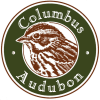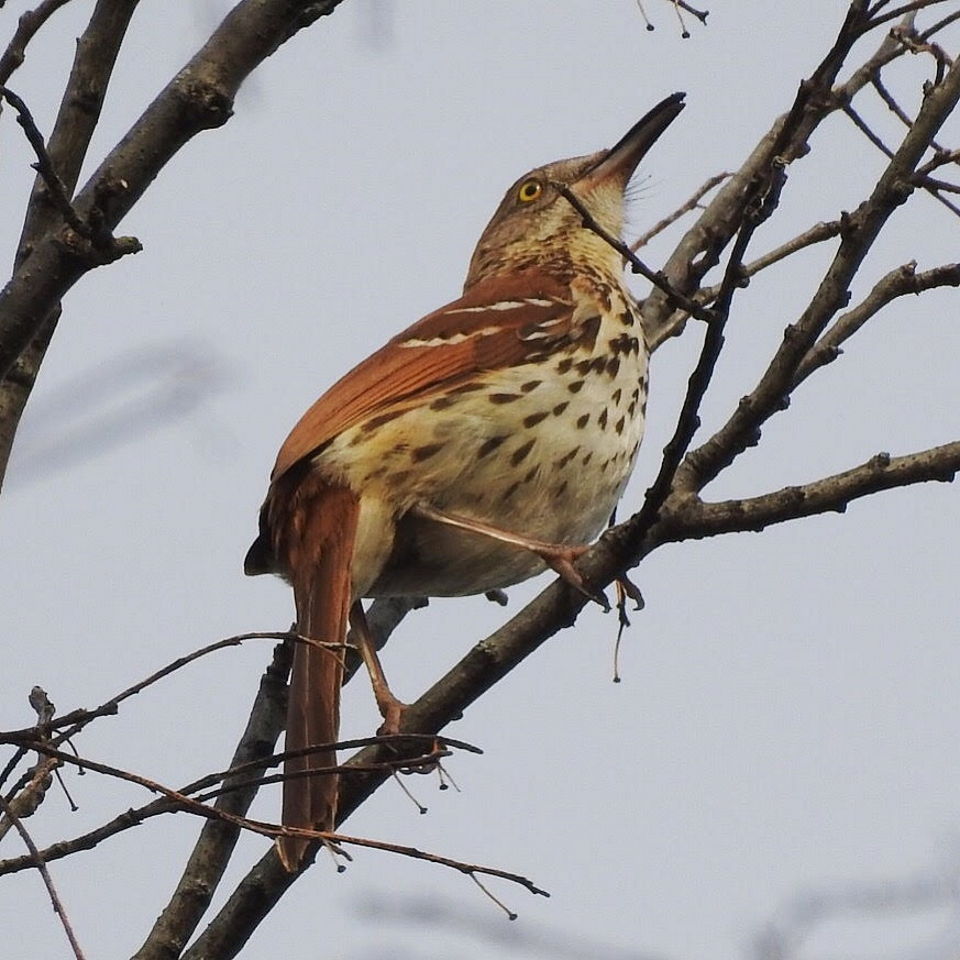Hi, I’m Katelyn Shelton I am going to share my exciting outing with OYBC!
As soon as my mother and I drove into Green Lawn Cemetery, I could feel an energy from the landscape around us; in the grasses, bushes, trees, and sky. It was supposed to storm sometime that morning, but the clouds were clearing and with great joy I rolled down the window to feel the sunlight.

When we pulled into the parking lot, a group of Young Birders was gathering to say “hello’s” to their friends, and “nice to meet you’s” to the new faces. I made a lot of new friends, all of whom were enthusiastic and kind. We were especially excited to meet Angelika Nelson, Curator Borror Laboratory of Bioacoustics at OSU, with her bird song recording equipment!
We followed each other through the cemetery as a train of cars, each locked and loaded with binoculars, cameras, scopes, and most importantly, Birders. We made our first stop near a small pond and some empty feeders that we were to refill. Flocks of kinglets were spotted right away, consisting of both types too! It didn’t take the group very long to find numerous Yellow-rumped Warblers either, with so many talented ears and eyes.
Speaking of talented ears, our special guest Angelika, who specializes in bird behavior, mostly based on how they communicate with one another, helped us pick out the many bird songs. She had also brought her high tech recorders and microphones that she would share with us.

After birding around the pond and sighting some nice birds (such as Louisiana Waterthrush, Brown Thrasher, and Winter Wren, to name a few) we moved along to the bridge. This was where we were supposed to try out some of Angelika’s professional gear, but unfortunately, there was also a removal of invasive plants that day and it was very noisy! Despite the ruckus, the Young Birders who tried out her gear were amazed at how they could hear birds across the clearing as if they were singing right beside them, and one even mentioned how they could hear their footsteps with high quality. I myself didn’t get to try out the equipment, I was sidetracked chasing a Wood Thrush, and then laying on the ground to take pictures of little Violets. I was also listening for an Ovenbird; there had been reports of it being there, but it had probably fled during the commotion of the invasive plant control group. It would’ve been a lifer — oh well! I’ll get that one some day, it just makes the search for the Ovenbird more exciting. A bit later, the group sighted a Broad-winged Hawk; awesome!! I assume it was a lifer for a few in our group. Great stuff was happening already, and our day was just halfway done.

After the joy of birding at Green Lawn, the team headed off to the headquarters of the Museum of Biodiversity; Angelika was giving us a lesson in her classroom! I was so very excited. She taught us how birds make songs, and how complex it can be. Not only that, she showed us what bird songs LOOK like through a sonogram. She pulled it apart and taught us what the different patterns and colors meant; I was jumping up and down like a little kid on the inside. Why couldn’t I have a class like this already? It was far more fun and interesting than the classes I took in high school. With the enthusiasm and teachings of Angelika combined, I found myself highly intrigued and motivated. I had learned so much, and it had opened new doors and perspectives to my life. This visit with OYBC was very special, and I’m counting down the hours until our next meeting!
Here’s a list of species seen on the trip, complied by Elizabeth Kanzeg:
Canada Goose
Wood Duck
Cooper’s Hawk
Broad-winged Hawk
Red-tailed Hawk
Mourning Dove
Red-bellied Woodpecker
Downy Woodpecker
Eastern Phoebe
American Crow
Tree Swallow
Carolina Chickadee
White-breasted Nuthatch
Winter Wren
Carolina Wren
Golden Crowned Kinglet
Ruby Crowned Kinglet
Eastern Bluebird
Wood Thrush
American Robin
Louisiana Waterthrush
Thrush sp.
Gray Catbird
Brown Thrasher
Northern Mockingbird
European Starling
Yellow-rumped Warbler
Eastern Towhee
Chipping Sparrow
Fox Sparrow
White-throated Sparrow
Northern Cardinal
Red-winged Blackbirds
Common Grackle
Baltimore Oriole

